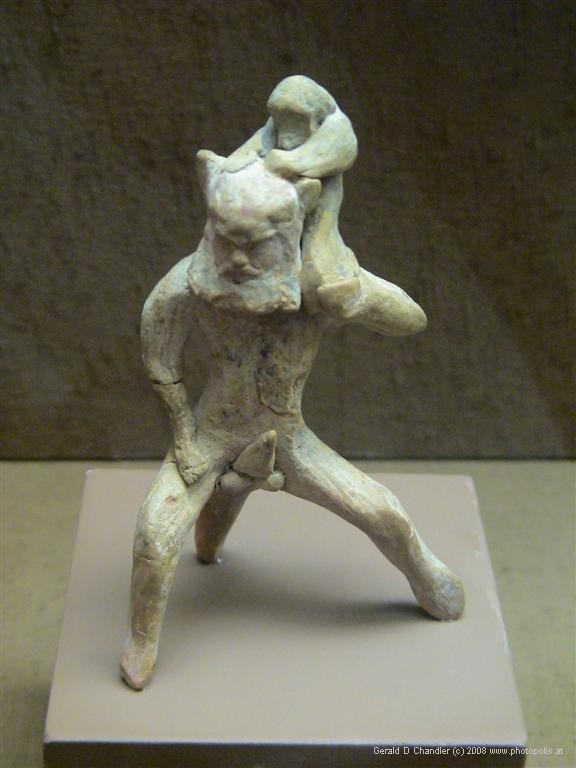Home | Front Page | Index | Blog | New | Contact | Site Map
Acropolis
Agora
History Museums
Myth Art
Olympeion
Piraeus
Roman Forum
Eleusis
3000 Years
Public Affairs
Beach
Spiti (At Home)
Guests
BBC Outlook
Visa Story
Maps
Foto Show
Other Parts of Greece
Greece 2006
Peloponnese
Aegean Islands
Crete 2006

Travel 2006
Greece
Turkey
Thailand
Malaysia
Indonesia
Singapore
Sydney
Travel 2005
Berlin
Paris
Moscow
Russia
Athens
Travel 2004
Mexico 2004
Belize
Guatemala
Honduras
Costa Rica
Panama
Colombia
Ecuador

Silenus Figurine, 550-530 BC
|
Silenus are in Greek mythology creatures of the wild, part man and part beast, who in classical times were closely associated with the god Dionysus. Their Italian counterparts were the Fauns. Satyrs and Sileni were at first represented as uncouth men, each with a horse's tail and ears and an erect phallus, and they later came to be represented as men having a goat's legs and tail. The occurrence of two different names for the creatures has been explained by two rival theories: that Silenus was the Asian Greek and Satyr the mainland name for the same mythical being; or that the Sileni were part horse and the Satyrs part goat.
Neither theory, however, fits all the examples in early art and literature. From the 5th century BC the name Silenus was applied to Dionysus' foster father, which thus aided the gradual absorption of the Satyrs and Sileni into the Dionysiac cult. In the Great Dionysia festival at Athens three tragedies were followed by a Satyr play (e.g., Euripides' Cyclops), in which the chorus was dressed to represent Satyrs. Silenus, although bibulous like the Satyrs in the Satyr plays, also appeared in legend as a dispenser of homely wisdom. -- Encyclopedia Britannica, 2005 DVD Edition